In the realm of emergency preparedness and outdoor adventures, having a reliable cooking source is paramount. Enter the world of DIY alcohol stoves, where ingenuity meets practicality. These portable and fuel-efficient stoves offer a versatile solution for preppers and adventurers alike, allowing you to cook meals, boil water, or provide warmth in any situation.
In this comprehensive guide, you’ll uncover the art of building your own DIY alcohol stoves, empowering you to embrace self-reliance and preparedness in the face of any challenge.
Key Takeaways:
- Learn to craft customized DIY alcohol stoves from readily available materials
- Discover the benefits and fuel options for alcohol stoves
- Master safety precautions and best practices for efficient, risk-free use
These stoves burn readily available alcohol fuels, making them a versatile option for cooking meals, boiling water, or providing heat.
This guide will explore the world of DIY alcohol stoves, equipping you with the knowledge and skills to craft your own customized stove for your prepping or outdoor adventures.
Table of Contents
What is an Alcohol Stove?
An alcohol stove is a portable and lightweight cooking device that burns alcohol as fuel.
These stoves are designed for outdoor activities such as camping, backpacking, or emergency situations where conventional cooking methods are unavailable or impractical. The primary purpose of an alcohol stove is to provide a safe and efficient way to cook meals, boil water, or produce heat in remote or survival scenarios.
There are two main types of alcohol stoves:
- Pressurized Alcohol Stoves: These stoves use a pressurized fuel bottle to force the alcohol into a burner, creating a controlled flame. They are typically more powerful and efficient but require specialized fuel bottles.
- Wickless Alcohol Stoves: These stoves rely on the capillary action of the alcohol to feed the flame. They are simpler in design, often made from recycled materials, and can use various fuel containers.
Advantages of using alcohol stoves include:
- Portability: Alcohol stoves are lightweight and compact, making them ideal for backpacking and camping trips.
- Fuel Availability: Denatured alcohol or other approved fuels are widely available and easy to obtain.
- Clean Burning: Alcohol burns cleanly, leaving minimal soot or residue.
- Adjustable Flame: Many alcohol stoves allow for flame adjustment, providing control over heat output.
Disadvantages may include:
- Fuel Efficiency: Alcohol has a lower energy density than other fuels, potentially requiring more fuel for extended cooking.
- Boil Time: Alcohol stoves may take longer to boil water compared to other stove types.
- Wind Sensitivity: The open flame design can be affected by windy conditions, potentially reducing efficiency.
Fuel Options for DIY Alcohol Stoves
When it comes to DIY alcohol stoves, the fuel choice is crucial. Here are some popular options:
Denatured Alcohol:
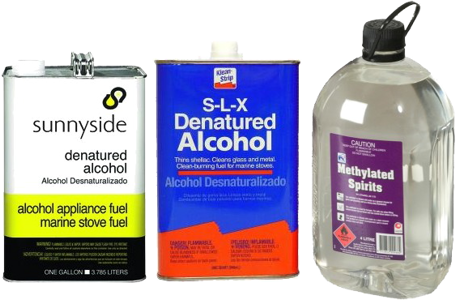
| Aspect | Description |
|---|---|
| Availability | Widely available at hardware stores and online retailers. |
| Safety Considerations | Flammable, but generally safe when used as directed. |
| Storage | Store in a cool, dry place away from heat sources. |
Isopropyl Alcohol (Rubbing Alcohol):
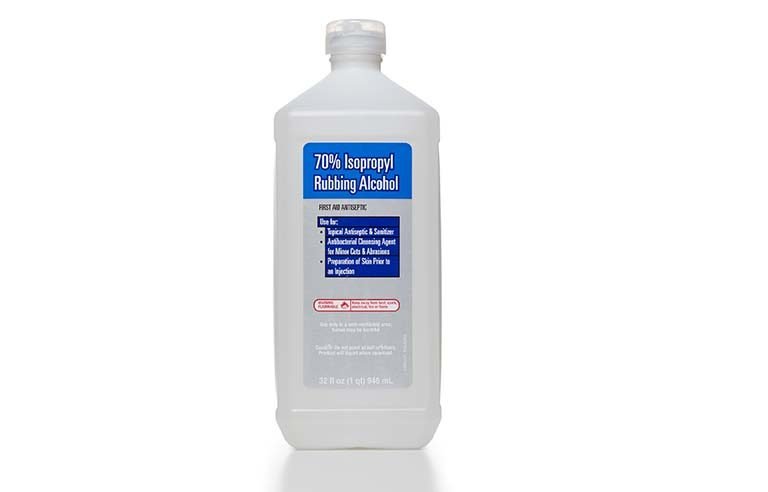
| Pros | Cons |
|---|---|
| Readily available | Burns with a yellow flame and soot |
| Inexpensive | Can leave residue in stove |
- Safety Precautions: Handle with care, as it is flammable and can irritate skin and eyes.
Alternative Fuels:
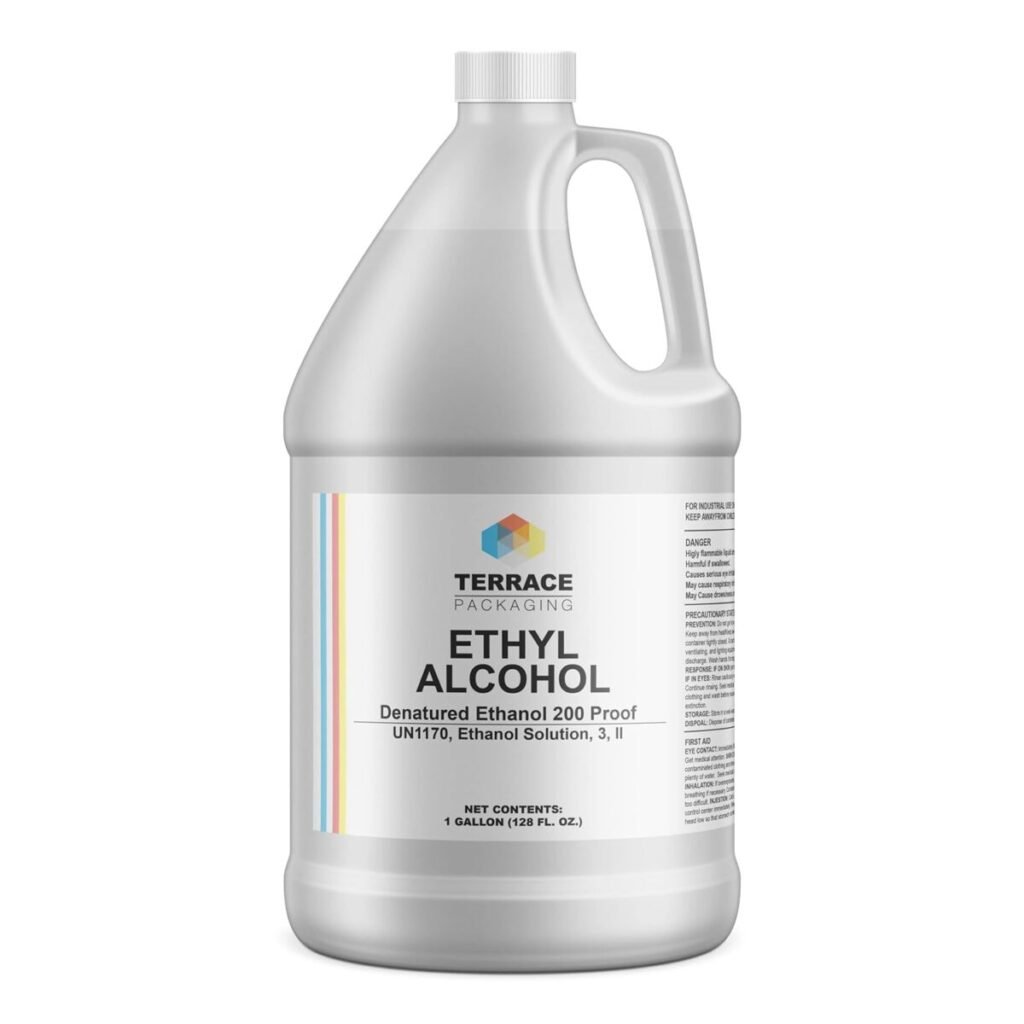
- Ethanol: A clean-burning fuel derived from plant sources, but can be more expensive and harder to find.
- Methanol: Highly flammable and toxic, making it less desirable for cooking purposes.
When selecting a fuel, consider factors such as availability, safety, burn characteristics, and compatibility with your DIY alcohol stove design. For long-term food and water storage, denatured alcohol or ethanol may be better options due to their longer shelf life and cleaner burn.
Essential Materials and Tools
To build your own DIY alcohol stove, you’ll need to gather a few essential materials and tools. Here’s a list of what you might need:
Materials:
- Cans or Bottles: Aluminum cans (like soda or beer cans) or small metal bottles (such as tuna cans) can be used as the base for your stove.
- Wicks: Cotton or fiberglass wicks are used in some alcohol stove designs to aid in fuel vaporization and flame control.
- Fuel Containers: Small, leak-proof containers (like plastic bottles or metal cans) for storing and dispensing your fuel.
- Sealants or Adhesives: High-temperature sealants or adhesives may be needed for certain stove designs.
Tools:
| Tool | Purpose |
|---|---|
| Scissors or Utility Knife | For cutting and shaping materials |
| Pliers or Wire Cutters | For bending and manipulating metal components |
| Drill or Hole Punch | For creating fuel holes or vents in your stove |
| Metal File or Sandpaper | For smoothing edges and deburring |
Safety Gear:
- Gloves: Protect your hands from sharp edges or hot surfaces.
- Safety Goggles: Prevent eye injuries from flying debris or sparks.
- Well-Ventilated Workspace: Ensure proper ventilation when working with flammable materials.
Having the right materials, tools, and safety gear on hand will make the DIY alcohol stove construction process smoother and safer.
Step-by-Step DIY Alcohol Stove Tutorial
Building your own alcohol stove can be a rewarding and cost-effective project. Here are step-by-step instructions for four popular DIY alcohol stove designs:
Homemade Alcohol Stove (Using a Soda Can or Bottle):

- Materials: Aluminum can or small metal bottle, wick, fuel container
- Steps: Cut the can or bottle, create fuel and air holes, insert the wick, and add fuel.
- Tip: Experiment with different hole patterns for optimal airflow and fuel efficiency.
DIY Camping Stove (Compact and Lightweight Design):
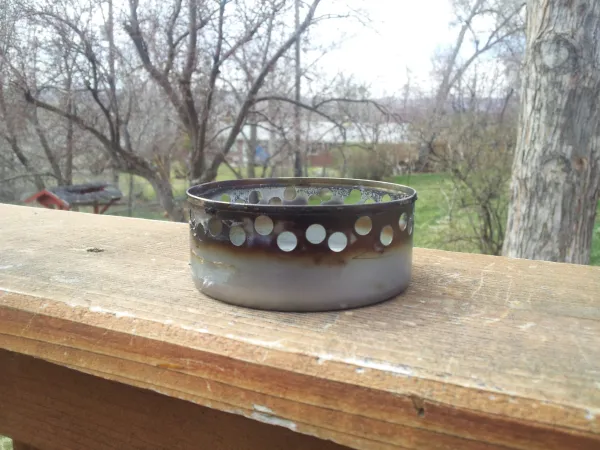
- Materials: Aluminum cans, small metal containers, sealant or adhesive
- Steps: Stack and seal the cans or containers, create a burner, and add a fuel reservoir.
- Tip: Use a lightweight, compact design for easy portability on camping trips.
DIY Alcohol Burner (For Outdoor Cooking or Heating):
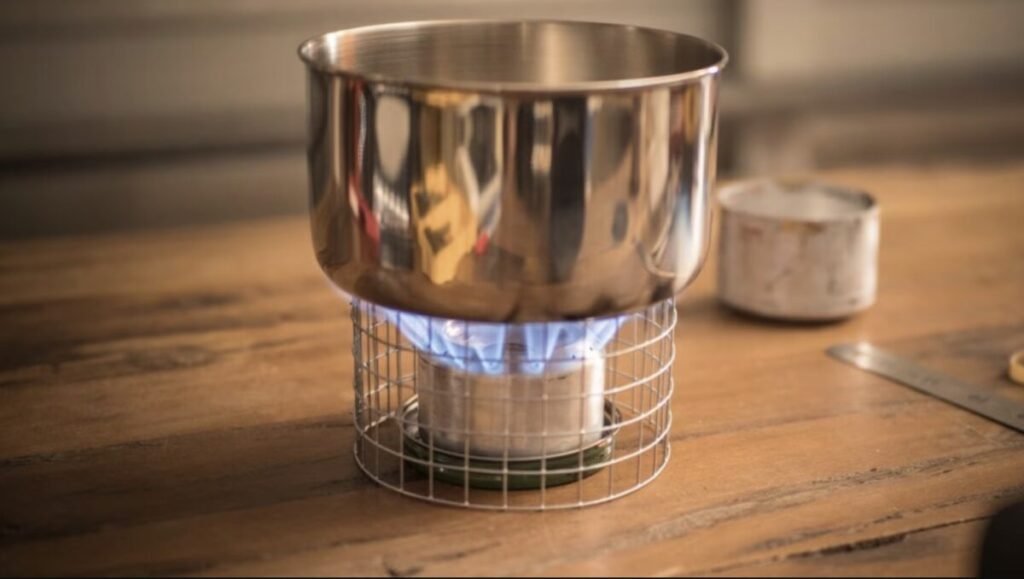
- Materials: Larger metal containers, heat-resistant sealants, and fuel reservoir
- Steps: Construct a burner base, create a fuel reservoir, and add a heat-resistant burner top.
- Tip: Use this design for larger cooking setups or outdoor heating purposes.
Remember to always prioritize safety, follow instructions carefully, and test your DIY alcohol stove before use.
If you plan on vacuum sealing food for storage or using Mylar bags, consider the portability and fuel efficiency of your DIY alcohol stove for potential emergency situations.
Crafting Your Own Alcohol Stove Design
While pre-existing designs can serve as excellent starting points, the true beauty of DIY alcohol stoves lies in the ability to craft your own unique creation.
Don’t be afraid to get creative and experiment with different materials and designs to suit your specific needs and preferences.
Here are some tips to help you customize your alcohol stove:
- Consider Your Needs: Think about whether you’ll be using your stove for backpacking, car camping, or emergency preparedness. This will help you determine the ideal size, weight, and fuel capacity.
- Explore Alternative Materials: While cans and bottles are common choices, you can also repurpose other household items like metal tins, pipes, or containers. Just ensure they’re heat-resistant and safe for use with alcohol fuel.
- Experiment with Fuel Types: While denatured alcohol is a popular choice, you can also try other fuels like isopropyl alcohol or even biofuels, depending on availability and compatibility with your stove design.
- Optimize for Efficiency: Play around with different burner designs, fuel reservoir sizes, and airflow patterns to maximize fuel efficiency and burn time.
- Add Personal Touches: Decorate your stove with engravings, paint, or other personal touches to make it truly unique and reflective of your style.
If you’re planning to store freeze-dried foods, a compact and efficient DIY alcohol stove could be a valuable addition to your emergency cooking setup.
Safety Precautions and Best Practices
When working with DIY alcohol stoves, safety should always be your top priority.
Creating and using these stoves involves open flames and flammable liquids, so it’s crucial to take the necessary precautions and follow best practices to ensure a safe and enjoyable experience.
Fire Safety and Proper Ventilation
Treating alcohol stoves with the same care as any open flame is essential.
Never leave a lit stove unattended, and ensure a safe distance from flammable materials. Keep a fire extinguisher or water source nearby in case of emergencies. Additionally, proper ventilation is crucial when using alcohol stoves.
Only operate them in well-ventilated areas to prevent the buildup of harmful fumes.
Handling and Storing Fuel Safely
Proper fuel handling and storage are critical aspects of DIY alcohol stove safety. Always store fuel in approved, leak-proof containers designed specifically for flammable liquids.
Clearly label all fuel containers to avoid confusion or accidental misuse.
Keep fuel containers away from heat sources, sparks, and direct sunlight to minimize the risk of ignition or explosions.
When handling fuel, exercise caution, avoid spills or skin contact, and never pour fuel onto an active flame.
Key Ideas
- Proper Containers: Store fuel in approved, leak-proof containers designed for flammable liquids.
- Label Containers: Clearly label all fuel containers to avoid confusion or accidental misuse.
- Safe Storage: Keep fuel containers away from heat sources, sparks, and direct sunlight.
- Responsible Handling: Use caution when pouring or handling fuel, and avoid spills or skin contact.
Maintenance and Care for Your DIY Alcohol Stove:
| Task | Description |
|---|---|
| Inspection | Regularly check for cracks, leaks, or damage. Replace components if needed. |
| Cleaning | Keep the stove free of soot, residue, and debris for optimal performance. |
| Fuel Management | Use fresh fuel and avoid mixing different fuel types. |
| Proper Storage | Disassemble and store the stove in a dry, cool place when not in use. |
Regular maintenance and care will ensure your DIY alcohol stove operates safely and efficiently. Inspect your stove regularly for cracks, leaks, or damage, and replace components if necessary.
Keep the stove clean and free of soot, residue, and debris for optimal performance.
Use fresh fuel and avoid mixing different fuel types, as this can affect burn characteristics. When not in use, disassemble and store the stove in a dry, cool place to prevent degradation or potential hazards.
By following these safety guidelines and best practices, you can confidently enjoy the convenience and versatility of your DIY alcohol stove while minimizing risks to yourself and your surroundings.
Accessories and Enhancements
While a basic DIY alcohol stove can meet your cooking needs, adding a few accessories and enhancements can significantly improve your overall experience and make your setup more efficient, convenient, and enjoyable.
Pot Stands and Windscreens: Investing in a pot stand or trivet can elevate your cookware, allowing for better heat distribution and stability while cooking. Windscreens, on the other hand, protect your stove from wind gusts, improving fuel efficiency and extending burn time. These simple accessories can make a substantial difference in your outdoor cooking experience.
Fuel Bottles and Storage Containers: Dedicated fuel bottles and storage containers can streamline your DIY alcohol stove setup. Look for leak-proof, spill-resistant bottles specifically designed for fuel transportation. These bottles will ensure safe and hassle-free fuel handling. Additionally, a designated storage container can help you keep your stove and accessories organized, protecting them from damage during transit or storage.
Carrying Cases and Transportation Options: If you plan to take your DIY alcohol stove on the go, investing in a carrying case or a convenient transportation option is highly recommended. A padded or insulated carrying case can protect your stove and accessories from impacts, moisture, and other environmental factors during transit. Alternatively, consider a backpack, shoulder bag, or other suitable options that allow you to transport your stove and its components comfortably and securely.
By incorporating these accessories and enhancements into your DIY alcohol stove setup, you’ll not only improve the functionality and efficiency of your stove but also enhance your overall outdoor cooking experience, making it more enjoyable and organized.
Troubleshooting and FAQ
Even with careful planning and construction, you may encounter some issues when using your DIY alcohol stove. However, being prepared with troubleshooting strategies and having answers to common questions can help you resolve problems quickly and efficiently.
Common Issues and Solutions:
- Priming: If your stove struggles to ignite, try preheating the burner with a small amount of fuel. This can help vaporize the fuel and initiate the combustion process more efficiently.
- Flaring: Excessive flaring can be caused by too much airflow reaching the flame. To address this, adjust the air vents on your stove or consider using a windscreen to control the airflow.
- Extinguishing: To safely extinguish the flame on your DIY alcohol stove, cover the stove with a lid or pot. This will cut off the oxygen supply, smothering the flame. Never blow on the flame or attempt to extinguish it with water, as this could cause dangerous flare-ups or splattering.
Frequently Asked Questions:
- Q: Can I use rubbing alcohol (isopropyl alcohol) as fuel? A: While it is possible to use rubbing alcohol as fuel for your DIY alcohol stove, it is generally not recommended. Rubbing alcohol can produce soot and unpleasant odors during combustion, making it a less desirable choice compared to denatured alcohol or other approved fuels.
- Q: How long will my DIY alcohol stove burn? A: The burn time of your DIY alcohol stove can vary depending on several factors, such as the stove design, fuel type, and the amount of fuel used. On average, you can expect a burn time of 30 to 60 minutes with a typical DIY alcohol stove setup. However, factors like airflow, heat output, and fuel efficiency can affect the burn duration.
- Q: Can I cook directly on the stove surface? A: It is not recommended to cook directly on the surface of your DIY alcohol stove. Instead, use a pot or pan to avoid scorching or contaminating your food with soot or residue from the stove. Cooking directly on the stove surface can also damage the stove components over time.
- Q: How do I clean my DIY alcohol stove? A: Proper cleaning and maintenance are essential for ensuring the longevity and safe operation of your DIY alcohol stove. Allow the stove to cool completely before attempting any cleaning. Use a brush or compressed air to remove any debris, soot buildup, or residue from the stove components. Avoid using water or other liquids, as they could potentially damage the stove or leave behind residues that could affect future performance.
If you encounter any persistent issues or have additional questions that are not addressed here, don’t hesitate to consult online forums, resources, or experienced DIY alcohol stove enthusiasts for further guidance and troubleshooting assistance.
Conclusion
DIY alcohol stoves offer a practical, affordable, and versatile solution for outdoor cooking and emergency preparedness. By following the guidelines and tutorials in this article, you can craft your own customized stove tailored to your specific needs, whether you’re embarking on a backpacking adventure or preparing for unexpected emergencies.
Embrace the spirit of self-reliance and preparedness by mastering the art of DIY alcohol stove construction. Not only will you gain valuable skills, but you’ll also have a reliable cooking source at your disposal in any situation, empowering you to face challenges with confidence and resourcefulness.
Remember, the journey doesn’t end here. Continue to explore and experiment with different designs, materials, and techniques. Join online communities and forums dedicated to DIY alcohol stoves, where you can share your creations, learn from others, and stay up-to-date with the latest innovations and best practices.
With a little creativity, determination, and a commitment to safety, you can become a true DIY alcohol stove expert, ready to tackle any outdoor cooking challenge that comes your way. Embrace the adventure, and let your DIY alcohol stove be a testament to your ingenuity and preparedness. For those interested in exploring other emergency cooking options, consider checking out guides on portable kitchen gas stoves or emergency wood stoves.


